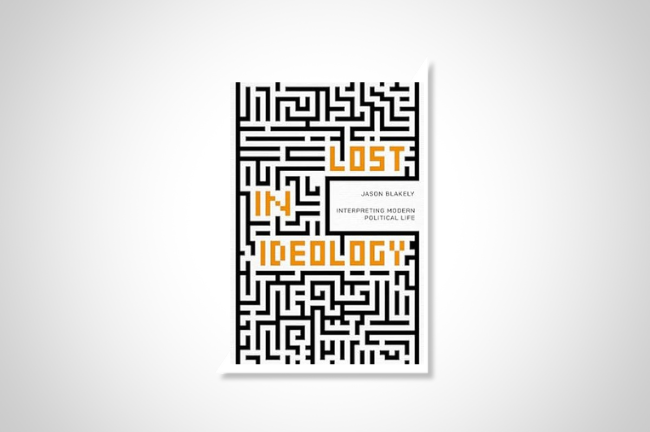You have /5 articles left.
Sign up for a free account or log in.

Agenda Publishing/Columbia University Press
Ordinarily the word “ideology” has a pejorative connotation in American usage. That overtone seems even more pronounced with “ideologue,” which is always derogatory. A partial exception could be made for another cognate, “ideologist,” which in China refers to a professional holding an official title and thinking official thoughts.
But the prestige carries little weight outside the People’s Republic, and if anything bolsters the reputation of ideology as codified dogma, imposed upon the mind and violating its autonomy. An informal Anglo-American cultural norm goes something like this: “I have an understanding of the world. You think within a paradigm. They have succumbed to an ideology.”
By contrast, the humanities and social sciences have developed far more sophisticated understandings of ideology, free of stigmatizing implications, and marked by deep skepticism toward the possibility of an ideology-free standpoint. In some contexts, ideology is roughly synonymous with “culture” or “social system.”
What we might call the vernacular (mis)understanding of ideology has little traction in the scholarly world. Even so, it remains the default understanding in political debate. Someone working with a more subtle concept of ideology might win a hearing, for a round or two. Then everyone else will go back to thinking of ideology as the generic name for a political belief system held in defiance of reality and good judgment.
Jason Blakely’s Lost in Ideology: Interpreting Modern Political Life (Agenda Publishing) makes the case for a more subtle and mind-opening perspective on ideology as a concept while keeping its focus squarely on the contested terrain of political worldviews. (The author is an associate professor of political science at Seaver College at Pepperdine University.)
The book presents a sequence of concise but thorough and well-framed profiles of major ideological currents emerging over the past four centuries: liberalism, conservatism, civic republicanism, white supremacy, progressivism, socialism, communism, fascism, nationalism (both ethnic and civic), feminism, multiculturalism, ecologism, and neoliberalism (not to be confused with libertarianism, though it usually is).
Most brand-name ideologies (pardon the expression) fall into order on the standard left-to-right political spectrum dating back to the French Revolution. But their placement can become ambiguous on closer inspection, or as a result of changes over time, while some (multiculturalism or ecological movements) call the left-right continuum itself into question. The author treats the histories and core principles of each with an eye to the affinities as well as the irrepressible conflicts among them. Without blurring the distinctions, Blakely stresses that an ideological system can spin off variants or absorb influences from another ideology in response to social change.
My description thus far may make the book sound like a field guide for ideological birdwatching, but the author’s interpretive framework makes it something more. The basic orientation comes from the anthropologist Clifford Geertz, who characterized ideologies not as discrete systems of ideas, but as “maps of problematic social reality”—a cultural tool for identifying and navigating through zones of potential conflict. (Or formulating a strategy to win, in some cases.)
In a society complex enough to have spawned a number of different (and incompatible) maps, ideologies can become something like a culture unto themselves. By this Blakely means more than such tribal garments as the red baseball cap and the knitted pink hat with cat ears. A political ideology is characterized by what he calls “sensemaking and ethically magnetic powers,” establishing a sense of order in the world—and within the self, which may face its own polarizing conflicts. Ideologies acknowledge, explain, and channel different emotions, and cultivate particular understandings of identity and difference.
The appeal of a particular ideology for someone is only in part a matter of intellectual plausibility or a quirk of personal affinity. Responding to the appeal of an ideological movement is sometimes compared to falling in love or experiencing a religious conversion—a complex and consequential experience, perhaps fully comprehensible only to someone else who has been through it.
Even when accurate and useful, the map is not the territory. Blakely goes beyond Geertz’s analogy between ideologies and maps by calling on Jorge Luis Borges’s one-paragraph classic “On Exactitude in Science,” a parable likely inspired by Franz Kafka.
In it, guilds of cartographers dedicate themselves to producing the most accurate map of the empire possible. Their efforts culminate in a map so exact that it is as big as the empire itself.
Unfolded, it stands in the way of anyone who might use it. The map obscures the terrain that it (literally) covers. A comparable dynamic with ideological maps is that their depiction of “problematic social reality” can conceal as much of the world as they depict; further, the map can become confused with the terrain itself.
Perhaps the most catastrophic instance of a map remaking the landscape the author discusses is the German legal theorist Carl Schmitt’s understanding of the fundamental distinction around which politics is organized: the distinction between friend and enemy. The polity’s survival depends upon the enemy being recognized and rendered powerless or destroyed. As an assessment of the world, this is self-fulfilling; it understands politics as war continued by other means. Schmitt went on to argue for the legitimacy of Hitler’s seizure of absolute power.
The map implied a course to follow. And having a map of some kind is almost inevitable. People who regard themselves as immune to ideological contagion would do well to read Blakely’s book, where they are likely to find the map they’ve assumed to be the world, adequately comprehended.




